Monosteira Costa, 1863
Type species: Monanthia unicornis Mulsant and Rey
Body oval and elongate, head short, clypeus not surpassing apical half of first antennal segment; antennae shorter than the length of pronotumpronotum:
dorsal sclerite of the first thoracic segment
; cephalic spinescephalic spines:
a spine on the head
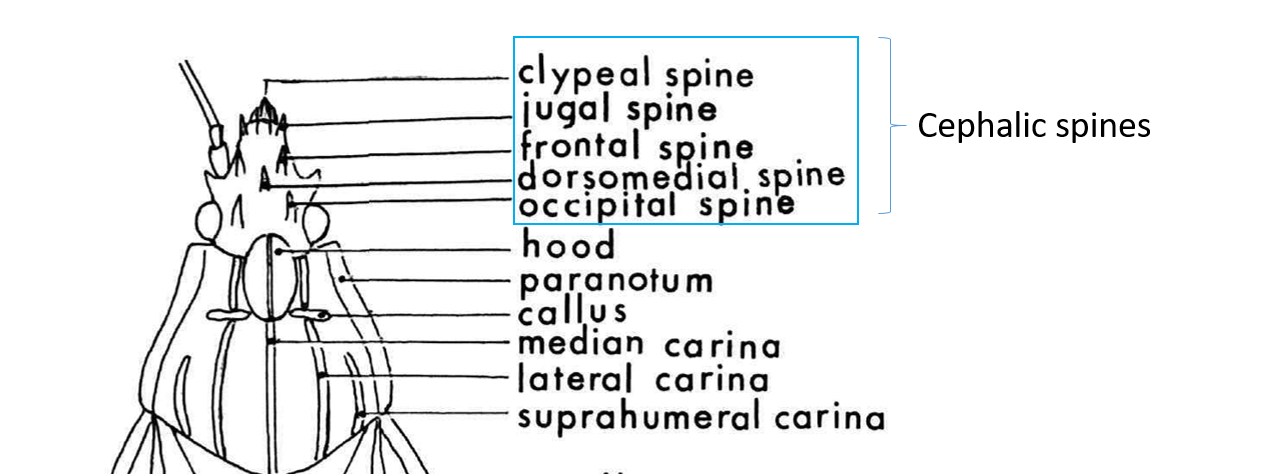 present; bucculaebucculae:
present; bucculaebucculae:
an elevated ridge on either side of the first labial segment
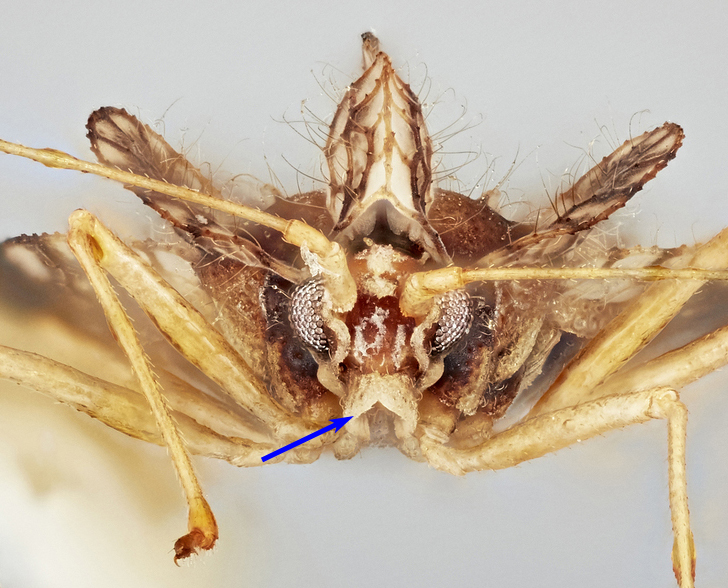 closed anteriorly; rostral sulcusrostral sulcus:
closed anteriorly; rostral sulcusrostral sulcus:
shallow furrow on either side of rostrum (labium)
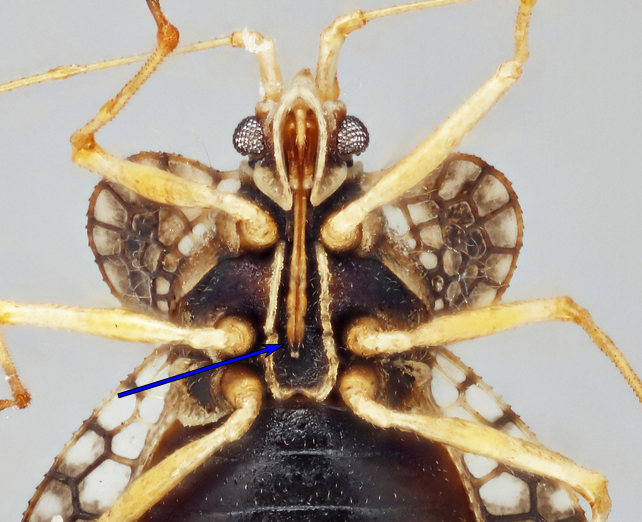 uninterrupted by a transverse carinacarina:
uninterrupted by a transverse carinacarina:
elevated ridge or keel
, enlarged on mesosternum and broadly cordate on metasternum; pronotumpronotum:
dorsal sclerite of the first thoracic segment
unicarinate; pronotal hoodhood:
term used to describe the modified anterior area of the pronotum, which is sometimes tectiform and sometimes bulbous, with numerous intermediate conditions.
 absent; paranotumparanotum:
absent; paranotumparanotum:
lateral extension of pronotum; may be carinate, explanate, or reflexed
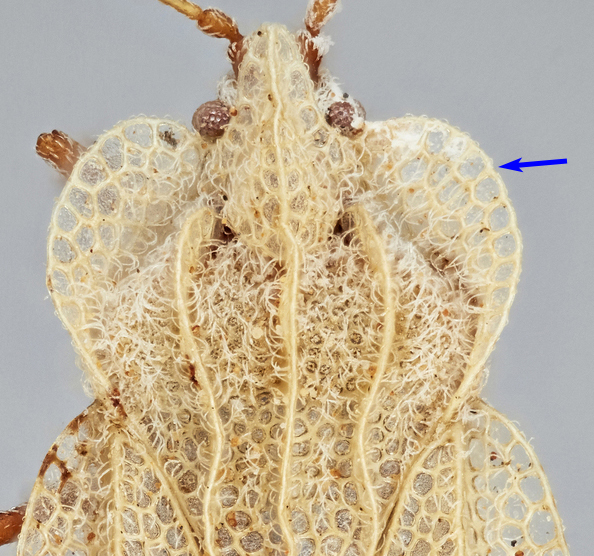 narrow, uniseriateuniseriate:
narrow, uniseriateuniseriate:
arranged in a single row, as in uniseriate areolae
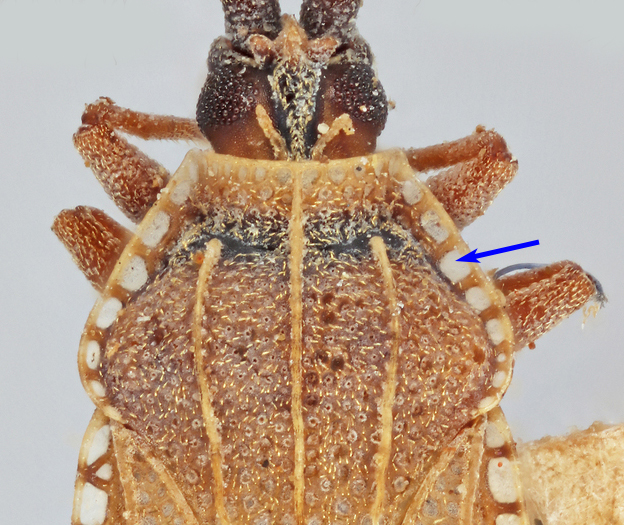 , anterior third reflexedreflexed:
, anterior third reflexedreflexed:
bent or curved backwards, as in a reflexed paranotum
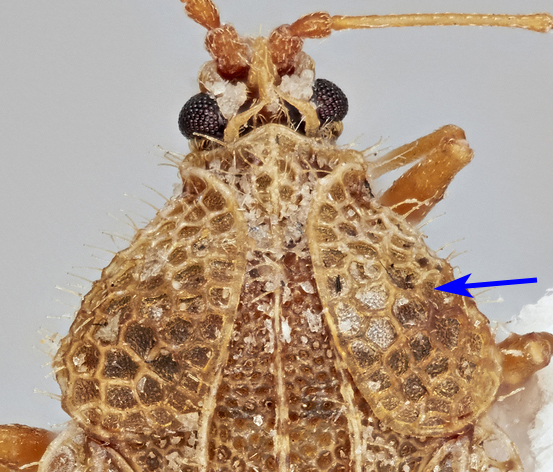 and appressed to the pronotal disc, spines absent along paranotal margin, anterior margin not projecting anterad; hemelytrahemelytra:
and appressed to the pronotal disc, spines absent along paranotal margin, anterior margin not projecting anterad; hemelytrahemelytra:
one of the basally thickened forewings of Hemiptera
with claval areaclaval area:
parallel-sided and sharply pointed anal area of hemelytron
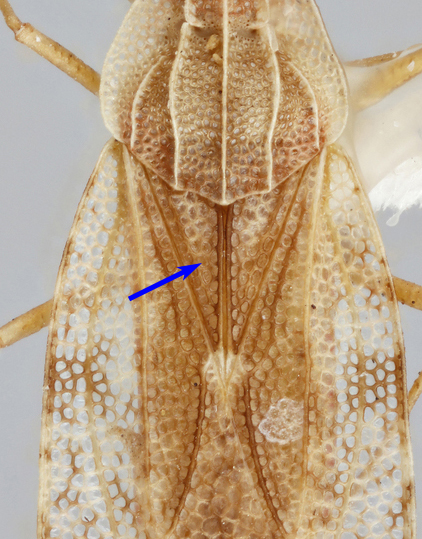 weakly developed, almost entirely covered by posterior margin of pronotumpronotum:
weakly developed, almost entirely covered by posterior margin of pronotumpronotum:
dorsal sclerite of the first thoracic segment
; costal areacostal area:
area of the costa delineated by the first longitudinal vein of the wing, usually running along the anterior margin
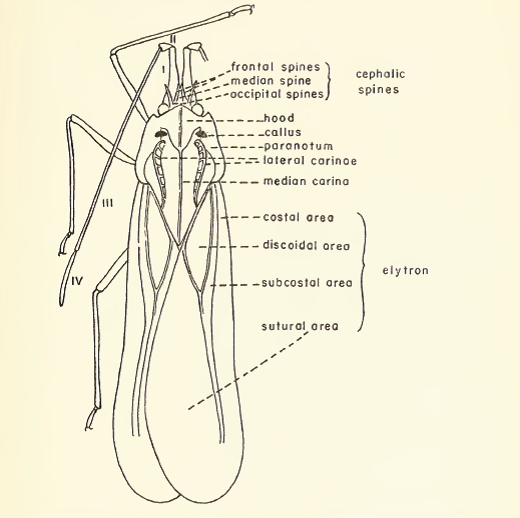 narrow, uniseriateuniseriate:
narrow, uniseriateuniseriate:
arranged in a single row, as in uniseriate areolae
 ; discoidal areadiscoidal area:
; discoidal areadiscoidal area:
area of the forewing posterior to the subcostal area
 level, discoidal cell long, extending well beyond the middle of hemelytrahemelytra:
level, discoidal cell long, extending well beyond the middle of hemelytrahemelytra:
one of the basally thickened forewings of Hemiptera
(Scudder 2012Scudder 2012:
Scudder, G. G. E. 2012. Monosteira unicostata (Mulsant amp; Rey) (Hemiptera: Tingidae) established in North America, with a key to the genera of Tingidae in Canada. Entomologica Americana. 118: 295-297.).
Afrotropical, Oriental, Palearctic (Drake and Ruhoff 1960Drake and Ruhoff 1960:
Drake, C. J., and F. Ruhoff, A. 1960. Lace-bug genera of the world (Hemiptera: Tingidae). Proceedings of the United States National Museum 112., Drake and Ruhoff 1965Drake and Ruhoff 1965:
Drake, C. J., and F. A. Ruhoff. 1965. Lacebugs of the World: A Catalog (Hemiptera: Tingidae) Bulletin of the United States National Museum: 1ndash;634., Guilbert 2019Guilbert 2019:
Guilbert, E. 2019. Lace bugs database - http://www.hemiptera-databases.com/tingidae)
| Intercepted species | Shipment origin(s) | Inspected commodities |
|---|---|---|
| Monosteira unicostata Mulsant & Rey | Croatia, France, Greece, India, Israel, Italy, Portugal |
Arachis hypogaea, Crataegus azarolus, Ficus carica, Malus sp., Malus sylvestris, Mespilus germanica, Prunus dulcis, Prunus sp, Punica granatus, Rosmarinus officinalis, Thymus citriodorus, Vitis sp., stone products-ceramic tiles, marble tiles |
Drake and Ruhoff 1960Drake and Ruhoff 1960:
Drake, C. J., and F. Ruhoff, A. 1960. Lace-bug genera of the world (Hemiptera: Tingidae). Proceedings of the United States National Museum 112., Drake and Ruhoff 1965Drake and Ruhoff 1965:
Drake, C. J., and F. A. Ruhoff. 1965. Lacebugs of the World: A Catalog (Hemiptera: Tingidae) Bulletin of the United States National Museum: 1ndash;634., Guilbert 2019Guilbert 2019:
Guilbert, E. 2019. Lace bugs database - http://www.hemiptera-databases.com/tingidae